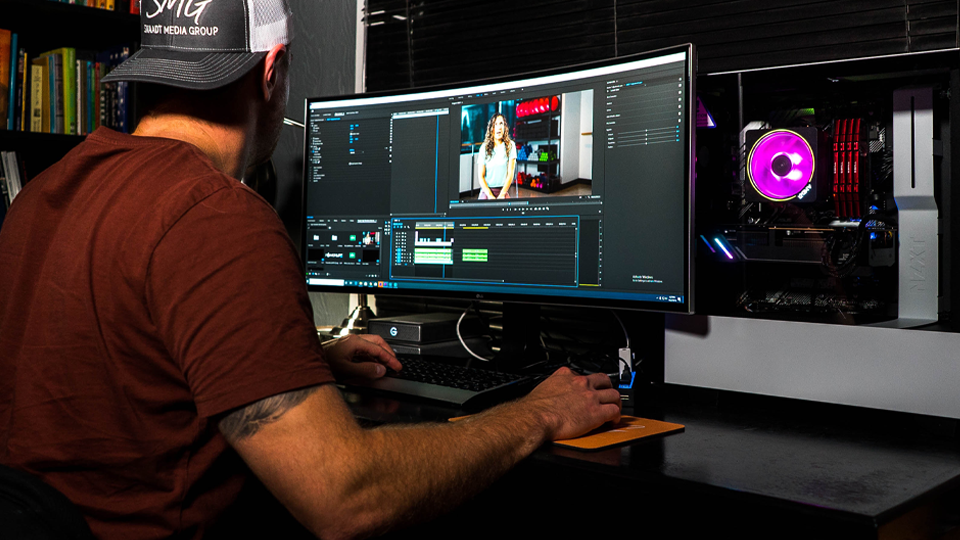How Hometeam uses Suite to leverage a global network of post production creatives

Samuel Taggart

10 Minutes

CHALLENGE – Hometeam has a distinctive business model for a creative studio—it does not have a central office or studio where its employees report. Everyone on the production and post production crews at Hometeam works remotely. This makes collaboration between Hometeam's creatives uniquely difficult throughout the entire process. From storing and sharing files to editing with people in other time zones, every aspect of Hometeam's post workflow requires cloud-based solutions. This studio's forward-thinking model would not exist without cloud technology.
WHY SUITE? – Suite enables Dan Tundis, director of post production at Hometeam, the ability to manage his team's remote workflows with greater ease than ever before. With Suite, Tundis uploads his files to the cloud once and provides instant access to these assets to anyone on his team, eliminating the need to ship drives or manage files in multiple locations. During post, Suite's scalable, virtual workstations allow Tundis to collaborate in real-time with other creatives and clients, no matter their location. And, for Hometeam, those creatives could be anywhere...
The next generation of video editing integrates creatives through the cloud. Here’s how Hometeam is capitalizing on this chance for global collaboration.
Managing a post production team comes with its unique challenges. From organizing media for editors to leading a team of creatives and staying in tune with clients, there’s always something to take your mind off the task at-hand. But innovative solutions, like Suite, are available for those studios looking to revamp their workflow and improve collaboration from afar.
Just ask Dan Tundis, director of post production at Hometeam, a boutique production and post services company that employs a global network of creatives without a brick-and-mortar location. Recently recognized as one of Fast Company’s Most Innovative Companies in Video for 2023, Hometeam was quick to realize the potential of Suite’s powerful cloud-based solutions, which has enabled it to redefine its post production workflows for new-age productivity.
Hometeam strays from the age-old model that prescribes a production studio to a physical location where it houses its computers, servers and employees; rather, this Los Angeles-based studio remains location-agnostic business that opts to utilize remote collaboration between in-house creatives, external clients and freelance collaborators based all across the globe.
“This is pivotal to our partnerships,” says Tundis. “We're able to tell authentic stories with authentic crew members; people already embedded in a location can often do more to tell a story than a production team from [somewhere else]. This approach also allows us to be more cost-conscious: We aren’t worried as much about hotel budgets, plane tickets, transportation and all of those things. And, even better, we’re really proud of the fact that we’re not sending people on planes or long car drives to create our content.”

The benefits are clear—a film crew that lives and works in Buenos Aires, Argentina, undoubtedly knows the ins-and-outs of the city better than a film crew from New York or Los Angeles would. And by employing this local crew, instead of one that has to travel, Hometeam saves precious time and effort not having to plan logistics; is able to better pay-out its creative teams because of these travel-related cost savings; and, in a bigger-picture win for the environment, promotes a business model that significantly reduces the use of fossil fuels, emissions and the many other side-effects of long-distance travel.
Adopting a global approach to creative collaboration isn’t an entirely new concept and Tundis admits that he and his team have been considering the idea for “the better part of a decade.” But Hometeam’s global approach to post production positioned the company to think differently—and with a sense of urgency. Tundis was assigned the task of establishing efficient, remote-first workflows that enabled the concept to work immediately, and that’s where his forward-thinking approach to team management and Suite’s cloud-based workflows collide.

"When I first started in post-production, [the expectation] was for editors and other creatives to come into the post house five, six, sometimes seven, days a week,” Tundis explains. “Producers would come over to my desk every couple hours asking to watch the latest edit and provide notes in the same moment before returning to their work. I loved that process of immediate feedback. When Hometeam first started with our remote workflows, we’d just throw all of our media on hard drives, send them to our editors, provide them with calendars and then cross our fingers and hope that they would meet the editing deadlines without any issues. That was the deal [for the last few years], and I think it hurt the creative. But [with Suite] we’re getting back to the idea of acting like everybody is still in the same room collaborating. We’re making strides [working remotely] and I don’t ever want to lose that sense of community and connectivity.”
As Tundis notes—and as every post production professional already knows—remote-first workflows before Suite were just clunky workarounds often an impediment to that sense of real-time collaboration coveted by creatives. Thankfully, over the last few years, the post production industry has experienced a positive shift to working remotely and the technology Suite provides is here to jumpstart the trend, enabling any size production studio to access the creative potential of their network, no matter where those collaborators are located.
Not only is Tundis able to connect his global team to Hometeam’s latest projects and make his company’s ambitious business model actually work—his day-to-day tasks as Director of Post Production have completely evolved. Tundis no longer has to micromanage his staff, waste time shipping hard drives or deal with the many logistics of “old school” post production processes that involve uploading, downloading and re-sharing files over and over again.

“With Suite, there's very little guesswork for me. I'm able to take incoming media, upload it, put it up on the server, then tell my editors and others where to find it—and, just like that, they’re ready to work,” says Tundis. “As someone who manages people, it provides peace of mind to have this oversight and it gets me back to doing my job the best. Now, I have more time to talk about new and upcoming projects and more energy to engage in partnerships. I also get to more easily prioritize networking with collaborators and creatives. Since we’re no longer reconnecting media files, waiting on hard drives delayed in the mail or anything else like that, we're able to focus on more important tasks than being caught up in the bits and bytes.”
More time and energy to nurture client relationships? More opportunity to scope creative talent? More bandwidth and budget flexibility to take on new projects? Is it all really possible? While Hometeam’s decentralized approach positioned Tundis and his team to adopt Suite’s cloud-based workflows early, the best part is that these virtual workstations—and their creative benefits—aren’t reserved for strictly remote teams. Suite’s product is designed to eliminate the hassles of the post production process for everyone in the creative field.
Tundis laughs that post production folks, on the whole, can be labeled as a pretty jaded group—always pragmatic or cautiously apprehensive about new technologies or processes—and notes one example of a headstrong colleague who has used the same keyboard shortcuts for the last two decades. “By nature, we’re a forward-thinking, creative, storytelling-focused, innovative group of people,” he says, noting the irony of the industry-wide stubbornness to adopt change. “The best way to break those old habits is to lead [my team] to a better way. Hometeam has really put its finger on the pulse of something here.”



































